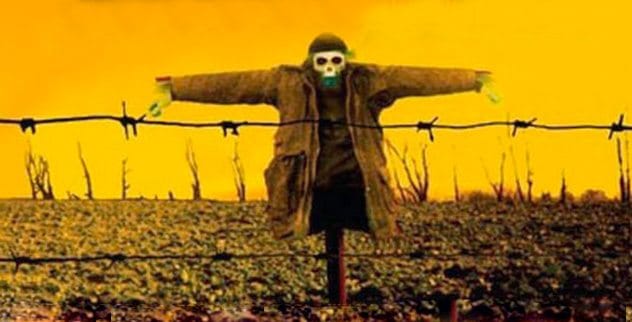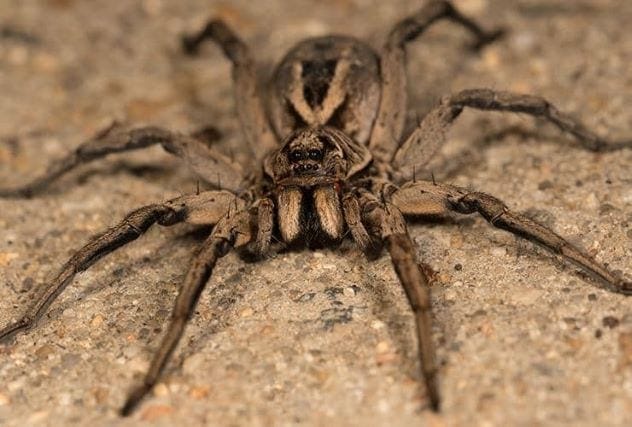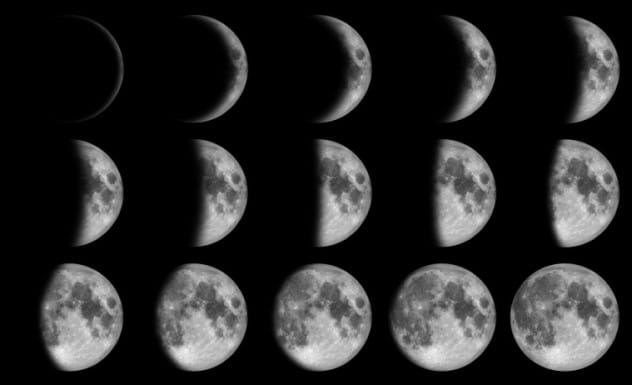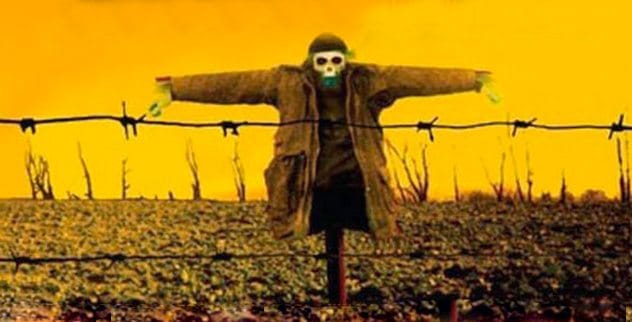Do you ever hear something so often that you just assume it’s true? We all do! But what if some of those “facts” are actually fiction? From worries about future food shortages to the dangers of flying in a storm, many commonly held beliefs are surprisingly off the mark. Get ready to have your mind boggled as we explore ten widespread misconceptions and uncover the real story behind them. You might be surprised by what you learn!
10We Need to Grow Vastly More Food for the Future

It’s a common worry: with the world’s population growing, will there be enough food to go around? Many believe we’re on the brink of mass starvation unless we drastically increase food production. However, experts like Professor Hans Herren from the Millennium Institute say this isn’t the case. Current global food supplies could actually feed about 14 billion people, which is nearly double our current population. The United Nations predicts the population will stabilize around 10 billion, meaning we already produce a surplus.
So, why do people still go hungry? The sad truth is that hunger today stems from issues like economic inequality, political problems, and disruptions like war, not a worldwide shortage of food. Instead of solely focusing on producing more, perhaps our attention should be on better distribution, caring for our planet, and ensuring human welfare.
9Lightning Strikes Will Destroy an Airplane

The thought of flying through a thunderstorm can be terrifying for many. What if lightning hits the plane? It’s a common fear, but the reality is much less dramatic. While airplanes do get struck by lightning, it happens less often than you might think. More importantly, when a plane is hit, it’s designed to handle it. Passengers are safe, and the plane won’t crash in a fiery disaster.
Modern aircraft are built to conduct electricity. If lightning strikes, the electrical charge, which can be up to 200,000 amperes, travels along the plane’s outer skin and frame. It then safely exits back into the air, possibly leaving only small burn marks where it entered and left. The crew might notice minor effects, or the plane might need some maintenance afterward, but everyone on board remains safe.
8Herbicides Create Invincible “Super Weeds”

Many people believe that repeatedly using herbicides leads to the rise of “super weeds” – plants that become resistant and unstoppable. While it’s true that weeds can develop resistance to herbicides over time, the idea of them becoming all-powerful “super weeds” is a bit of an exaggeration. This resistance often comes with drawbacks for the weed itself.
Joe Armstrong, a field scientist, explains this with an example: atrazine-resistant velvetleaf. This weed is indeed resistant, but it has a “fitness penalty.” This means the resistant plants don’t grow as tall or as quickly as normal velvetleaf. While herbicide resistance is a genuine concern for farmers, it’s something that can be managed. Strategies like using different types of herbicides, tillage, crop rotation, and cover crops can help prevent future resistance.
7General Anesthesia Is Frequently Fatal or Risky

If the thought of going under general anesthesia makes you nervous, you’re not alone. A 2018 study showed that a large majority of people fear aspects like pain, waking up during surgery, or not waking up at all. Many worry that anesthesia is highly dangerous. However, these fears are largely not supported by current medical facts.
The chances of remaining aware during anesthesia are incredibly slim, occurring in less than 0.1% of cases. The risk of dying after surgery is ten times lower than it was in 1970. Specifically, the likelihood of dying *under* general anesthesia is about 0.0001%, or one in 100,000. Modern anesthesia is remarkably safe, and the belief that it’s often fatal or goes wrong is a significant misconception.
6All Arachnids Spin Webs

When you think of arachnids, you probably picture intricate webs, right? It’s a common association, but it’s not entirely accurate. Firstly, not all arachnids are spiders. This group also includes scorpions, ticks, mites, harvestmen (daddy long legs), and solifuges (wind scorpions). Secondly, not all spiders, nor all arachnids, make webs to catch prey.
A web is a silk structure specifically made to trap food. Only about half of all known spider species actually build these. Other spiders are active hunters, like wolf spiders and jumping spiders, or ambush predators, like trap door spiders and crab spiders. These spiders still use silk, but for other purposes, such as creating draglines (safety lines), egg sacs, or little silk “houses” to rest in.
5The Anasazi People Vanished Without a Trace

One of the most enduring mysteries, or so it seems, is the disappearance of the Anasazi, also known as the ancient Pueblo people. Many believe they simply vanished from their homeland in the Four Corners region (parts of Utah, Colorado, Arizona, and New Mexico) between 1260 and 1300. Archaeologists say this idea of them disappearing without a trace is a persistent misconception.
The Anasazi didn’t just evaporate. Instead, they migrated. They moved and established new homes, joining other Pueblo groups to the east along the Rio Chama and Rio Grande, south to Zuni, Acoma, and Laguna, and west with the Hopi. Their descendants are very much alive today, carrying on their cultural heritage.
4California Will Eventually Fall into the Ocean

It’s a dramatic image often seen in movies: a massive earthquake hits, and California dramatically slides into the Pacific Ocean. Many people believe this is an inevitable fate for the Golden State. However, geologists say this is a misconception, partly fueled by a lack of public awareness of geological science.
The San Andreas Fault, the primary concern, is a strike-slip fault. This means the Pacific Plate is moving northwest alongside the North American Plate. Most of the movement is horizontal, parallel to the fault, with very little vertical movement. While faults do have some vertical offset, it’s not nearly enough to cause a landmass the size of California to sink into the ocean. So, Californians don’t need to worry about their state becoming an underwater Atlantis. However, the land west of the fault will continue to move northward, meaning Los Angeles will one day be next to San Francisco – and the earthquake causing such shifts will still be devastating.
3The Earth’s Shadow Causes the Moon’s Phases

What causes the moon to change its shape in the sky? Shockingly, back in the 1980s, researchers found that both Harvard University seniors and ninth-grade students often shared the same wrong answer: they believed the Earth’s shadow falling on the moon causes its phases. This is a very common misunderstanding.
The phases of the moon are actually due to our changing perspective of the sunlit portion of the moon as it orbits the Earth. Dr. Barbara Cohen, a NASA planetary scientist, explains that as the moon revolves around us, different amounts of its sunlit side face us. A “new moon” occurs when the side of the moon facing Earth is not illuminated by the sun. A “full moon” is when the entire side facing Earth is sunlit. In between, we see phases like the crescent and gibbous moon, as the visible sunlit area “waxes” (grows) and “wanes” (shrinks).
2A Comet’s Tail Always Trails Behind It

If you’ve seen pictures or movies of comets, you’ve likely noticed a long, glowing tail. It’s natural to assume this tail always streams directly behind the comet, like smoke from a chimney, indicating where it has been. This isn’t quite right. In fact, a comet typically has two tails, and their direction is determined by the sun.
Comets are icy bodies left over from the solar system’s formation. As a comet nears the sun, solar radiation vaporizes its ice and dust, creating a glowing cloud (the “coma”) around its nucleus. The solar wind then pushes this material away, forming tails. One tail, made of ionized gas, always points directly away from the sun. The other tail, made of dust, is less affected by the solar wind and curves slightly back along the comet’s path. Interestingly, when a comet is moving away from the sun, its tails can actually precede it!
1Forensic Evidence Is Always Foolproof

Thanks to popular crime shows, many people believe that forensic evidence – like fingerprints, DNA, or ballistics – is infallible and can always pinpoint a culprit with absolute certainty. However, the reality of forensic science is much more complex. It’s very rare for forensic evidence to identify material with complete certainty or match two samples to the exclusion of all other possibilities.
Real-world evidence is often not pristine like it appears on TV. It can be tiny in quantity, degraded, or contaminated. Consider trace evidence: if a suspect’s DNA is found on a victim, was it transferred directly, or indirectly through several intermediaries? Explaining these nuances, along with complex concepts like transfer, persistence, frequency, and probability, to a jury can be challenging for forensic scientists. The interpretation and presentation of forensic evidence involve many factors that can affect its perceived strength in court.
It’s clear that many things we take for granted as “common knowledge” might not be so accurate after all. From global food supplies to the behavior of comets, the world is full of fascinating details that often get oversimplified or misunderstood. Questioning assumptions and seeking out credible information can lead to some truly eye-opening discoveries. Next time you hear a surprising “fact,” take a moment to dig a little deeper – you might uncover a misconception!
What are some mind-boggling misconceptions you’ve encountered or once believed? Share your thoughts and experiences in the comments below – let’s keep the conversation going!










